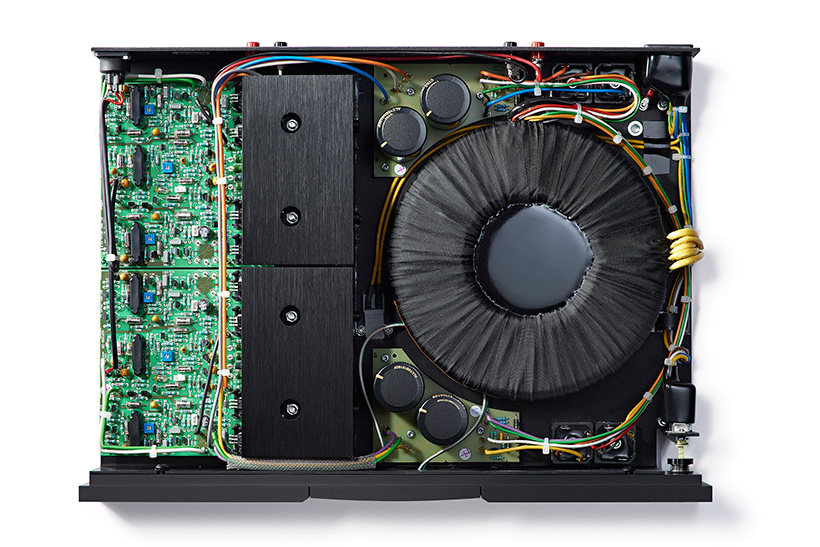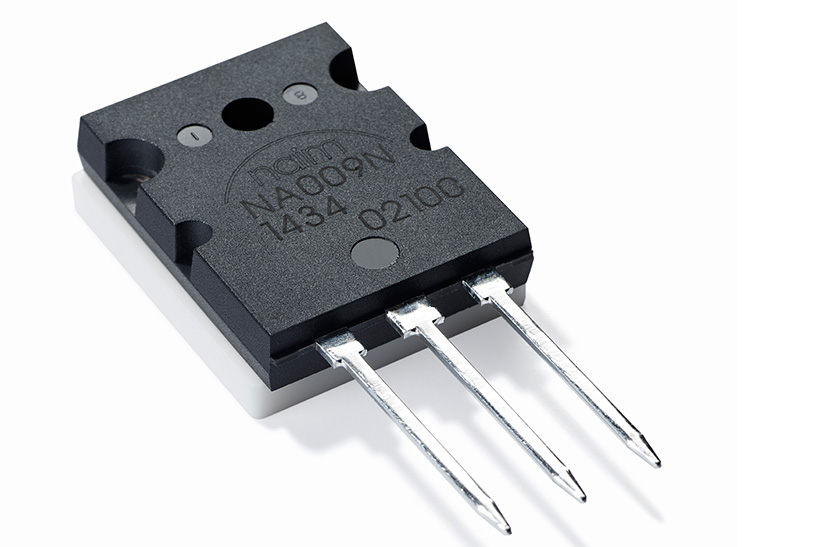The NAP 250 power amplifier has been a mainstay of the Naim range since time immemorial, or at least that’s the way it seems. The first NAP 250 was first made in 1975 and had the ‘chrome bumper’ livery of that era (it wasn’t chrome nor did it have bumpers but that’s by the by) and the same basic form that it does today, which if anything is the definitive power amplifier shape. It has gained something of a legendary status among the many devoted fans of the brand and I have often wondered whether it warranted this or had simply stayed in the range so long that it had garnered it by default. The introduction of DR or discreet regulation along with technology from the instantly legendary Statement amplifier gave me an excuse to find out.
DR was introduced to Naim’s HiCap, XPS and Supercap external power supplies in 2012 and caused a flurry of excitement at the time, now the suffix has been appended to the power amp range. It stands for discrete regulation but when I asked Naim’s amp guru Steve Sells (below) what the previous NAP 250 had he said “Before DR, the NAP amplifiers used discrete component regulators but not the ‘Statement discrete regulators’. The previous regulator used a Zener diode voltage reference. The reference and the regulator drive circuits were powered from the raw power from the transformer and capacitors. The raw supply has much unwanted 100Hz ripple noise from the rectified 50Hz mains supply. The DR regulator in contrast uses a quieter buried Zener for the voltage reference. Here the silicon junction is buried under a passivation layer which means contaminants don’t get into it, it’s probably the quietest voltage source you can get, and then we filter it. The buried Zener and regulator drive circuits have been engineered to be predominantly powered from its own quiet output instead of the incoming noisy raw power. Only the output stage of the DR regulator drive circuit is powered from the raw supply. The result is a significantly quieter and lower impedance power supply. The interesting thing is that if you measure the DR amp compared to its predecessor the THD and signal to noise figures aren’t that different.”

Naim engineer Steve Sells with Statement
The power supply rails of a DR amplifier are measurably ‘stiffer’ however and if you look very carefully at crossover [distortion] and transient response those things get better, but you have to look in absolute detail, in circuit, not on the output. The fundamental amplifier has remained the same, there’s a few component values changed because we tune the compensation to suit the different power supply.”
I wondered if this amplifier needed the inductance provided by certain speaker cables to maintain stability and was told “no, you can put any cable on it. The last version, the NAP 250 Mk2 was also cable tolerant. It’s only really the older models that you have to be a bit careful with. I also asked Steve whether the DR amps have exactly the same NA 009 transistors as Statement and was told: “the Statement ones are selected but they are exactly the same. What we do on the selection for Statement is take four that were made from adjacent silicon dies and have exactly the same parameters. Because we use four in parallel on both negative and positive rails, and the output is bridged we have to be really stringent on the matching because there’s no feedback. All the NAP DRs only have one pair of output transistors per channel, so there’s nothing to match against. But otherwise they’re identical so we use the ones that haven’t matched up.

“The transistors are now insulated with ceramic rather than mica which is much better at thermally coupling or conducting heat. What you want to do is insulate the devices electrically but couple as much heat as possible, mica only does this because it’s thin but it doesn’t do it as well as ceramic, which means the die in the transistor gets heat modulated with the signal. This is significantly reduced with ceramic insulators. The other benefit with ceramic being thicker (3mm) is it reduces the capacitive coupling of the transistors to the chassis.”
There is no ornamention on the front of the NAP 250 DR save for a power switch and a light to indicate status, and the back panel isn’t a lot more complicated. It has an XLR input that feeds both channels, sockets for 4mm banana plugs and a mains inlet. It’s got to be the most minimalist power amp in its price range but the build quality, fit and finish are commensurate despite the lack of flashy terminals. As Steve Sells mentions the current Naim power amplifiers no longer need a certain length of high inductance cable to remain stable – which is where the particular spacing of the banana sockets originates – and one wonders whether a pair of WBT five-way cable terminals might improve perceived value. But they would probably be dismissed on sonic grounds down in Salisbury.
As is the Naim way the number in the name does not indicate power output, well not very clearly because specified output is unchanged at 80 Watts per channel into eight Ohms. Naim has always used the combined output of both channels into four Ohms however, which results in a figure somewhat closer to 250 Watts.
Sound quality
This is easily the best sounding Naim amplifier I have reviewed, and one of the best power amps I’ve reviewed period. It has transparency, pace and bandwidth that caught me by surprise. Having heard what Statement could do I was optimistic but expectations have been well and truly exceeded.
It’s an inconvenient bugger of course, you can’t just hook up the regular preamp because of that two channel XLR input, so I started out using a NAC N-272 streamer/preamplifier with a standard Naim interconnect on its DIN output. That produced results that were so encouraging that I asked to borrow a cable from Chord Co that would allow me to hook up the RCA phono outputs of the Townshend Allegri passive controller I usually use, and that made things even more thrilling. It turned the system into a serious diversion that undermined deadlines and caused a lot of tweaking and comparisons to see which source and speakers were the best match.

NA009 transistor, note ceramic insulator beneath.
Things started out with the NAC N-272 and Bowers & Wilkins CM10 S2 speakers connected with my regular Townshend Isolda speaker cable, and after some warm up the system started to sing. The NAP 250 DR has decent grip for a 80 Watt design and pulled out dynamics and atmosphere aplenty from the Henry Threadgill Sextett’s ‘Bermuda Blues’ (You Know The Number, Novus) which is a lively and intense two horn, bass and drums jazz piece that’s high on transient attack. It sounded particularly realistic thanks to very convincing impact from the drum kit and fulsome welly from the double bass that coalesced to produce a joyous groove of the sort that keeps you well away from the pause button. A few more tracks made me wonder whether I had underestimated the speaker, what is more likely is that it works particularly well with this amplifier. Another track that revealed just how well this Naim delivers leading edges was ZZ Top’s ‘Waiting For The Bus’ (Tres Hombres, Warner Bros), the phrase ‘have mercy’ from that song seems particularly apt albeit in an entirely positive respect.
Moving to my reference PMC fact.8 speakers improved image scale and sharpened up the timing still further thanks to the taut bottom end on this transmission line design. Now the sound had more snap than a pack of alligators and spectacular transparency, on Laura Marling’s ‘I Was An Eagle’ (Once I Was An Eagle, Virgin) you can hear the compression but you can also hear right into the mix and pick out the drone, the strings and tabla, it’s very Led Zeppelin III yet would never be mistaken for a pastiche, clever stuff. The NAP 250 DR is that sort of amplifier, one that gets out of the way so that you get carried away by the music, a seemingly simple trick but one that not enough revealing amplifiers can pull off. Everything you do to improve the signal chain in front of it helps of course and I did some interesting comparisons between media servers, the Melco’s direct Ethernet connection delivers the cleanest result but the Naim Unitiserve has the edge when it comes to engagement, it gets to the parts that others don’t by taking the emphasis off refinement and focussing on musicality. It does a remarkable job of showing you how musicians bounce off one another when they play together, this comes down to speed, there is little in the way of time smear with this amp, notes stop when they should so there is very little overhang.

I got to hear a public demonstration of the previous generation of NAP 250 compared with the DR version at an Audio T event in Brighton. It was a large room with a lot of people in it and I had a pretty poor seat but even so the increase in transparency and reduction in hash/noise was very clear. Most of the Naim amplifiers I have reviewed had a slightly earthy sound with limited perceived bandwidth, which is not unappealing but less revealing than the best of the alternatives. This did not stop their timing skills from being apparent and the success of the company has been built on that sound, so clearly it works. With DR Naim seems to have retained the pace, rhythm and timing and added power and transparency, so the NAP 250 DR now has low end grunt that makes for extremely muscular bass with the right speaker.
That speaker turned out to be a PMC twenty.26 that had conveniently been delivered for review at the right time, it proved the best match yet by offering an extremely articulate mid and top allied to more powerful bass than the fact.8 and a smoother overall balance. I had a lot of fun with this pairing, trying all sorts of sources from the Rega RP10 turntable and Tom Evans Groove Anniversary phono stage to the Chord Mojo portable DAC which proved to be the fastest digital source yet when hooked up to the Melco digital transport. Both sources made the most of the Naim’s wide band dynamic capabilities and had me glued to the sofa seeking out music to enjoy. Even less impressive recordings like Frank Zappa’s Sleep Dirt opened up to reveal even more of the incredible musicianship that went into their creation. If you are looking for a tool that shows you precisely what’s going on in a recording this is one of the best amplifiers for the job, but it still puts the musical message first, analysis may be possible but emotional communication is the essence.
I am told that the NAP 300 DR is the amplifier to beat and if it’s better than this that would be true, but the NAP 250 DR is a classic reborn, a power amplifier for the high resolution era that will take any signal and make the most of it.


